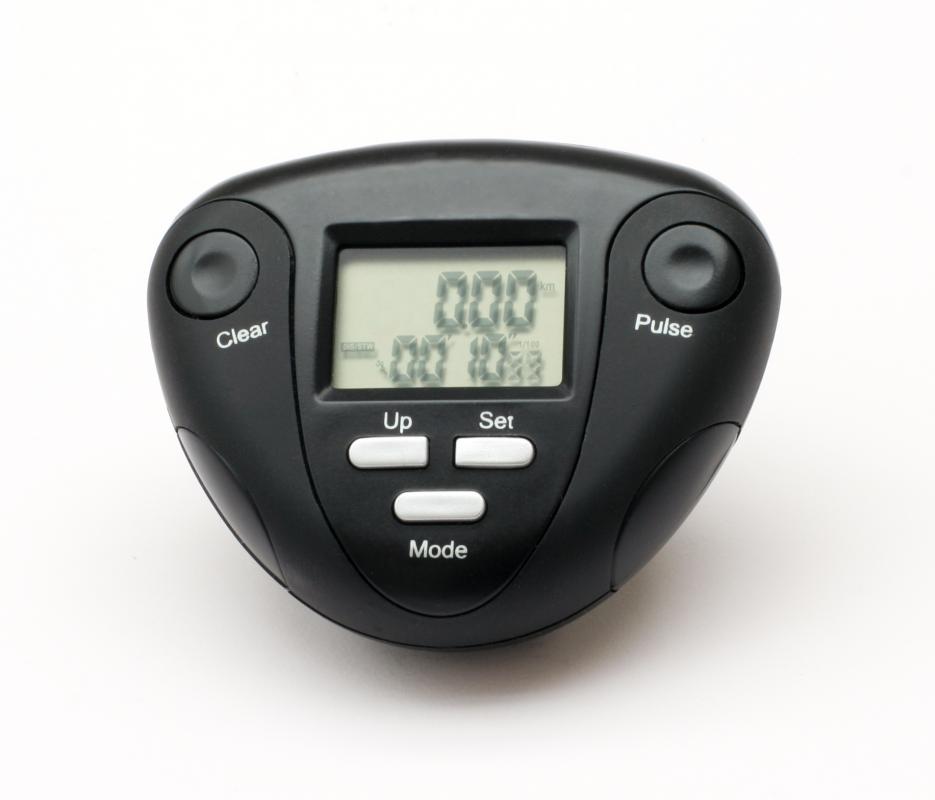At WiseGEEK, we're committed to delivering accurate, trustworthy information. Our expert-authored content is rigorously fact-checked and sourced from credible authorities. Discover how we uphold the highest standards in providing you with reliable knowledge.
How do I Choose the Best Distance Pedometer?
A distance pedometer’s main function is to measure steps so it is important to choose one that is accurate as well as comfortable. Certain pedometers measure steps by counting the number of times weight moves up and down. This is not always accurate though; a accelerometer can be a more precise option because it measures movement. Large pedometers can be awkward while smaller versions are light and can be concealed in a pocket. Additional features such as a cover and distance and calorie measurements are also available, but the latter calculations are generally inaccurate.
A proper distance pedometer should measure steps. Not all pedometers are accurate when it comes to calculating the amount of steps a wearer takes in a day. Most pedometers work by counting the number of times that weight moves up and down. Although this is accurate when it comes to walking, some pedometers also count bumps such as those experienced when driving a car.

There are other distance pedometers that try to avoid an inaccurate reading from the aforementioned bumps by not counting the first couple of steps taken by the wearer. This is an effective method of excluding non-steps in a daily total. One problem with these pedometers, however, is that they also fail to take into account occasions when the wearer does take a couple of steps. This could lead to a very inaccurate daily total.

To obtain the most accurate distance pedometer, choose one that has an accelerometer. This form of pedometer does not use the traditional up and down weight method to measure steps. Instead, it possesses a piezoelectric crystal that measures an individual’s movement, thereby giving a more accurate reading.
The size of a distance pedometer should also be a factor. There are small versions available that measure just 1-1/2 inches (4 cm) and larger ones 4 inches high (10 cm). Wearing a large device on a belt can be a distraction for most people. This is why smaller pedometers are often the better option. These can even be worn in a shirt or trouser pocket.
It is only necessary to worry about extra features on a distance pedometer once its main function of counting steps is satisfactory to the user. It might be a good idea to purchase a cover for example; if the pedometer hits something, it may reset itself which will ruin the whole day’s total. One minor problem with a cover is that it needs to be removed to see the step total.
Other additional features include distance and calories burned. An advanced distance pedometer will be able to tell how many calories the user burned and how far he or she traveled during the day. An issue with this that both figures are estimates. As each person’s metabolism is different, it is impossible to give a totally accurate reading. Distance is measured by stride length which is entered by the user, but there is no way that the length of each stride will be identical.
AS FEATURED ON:
AS FEATURED ON:












Discuss this Article
Post your comments